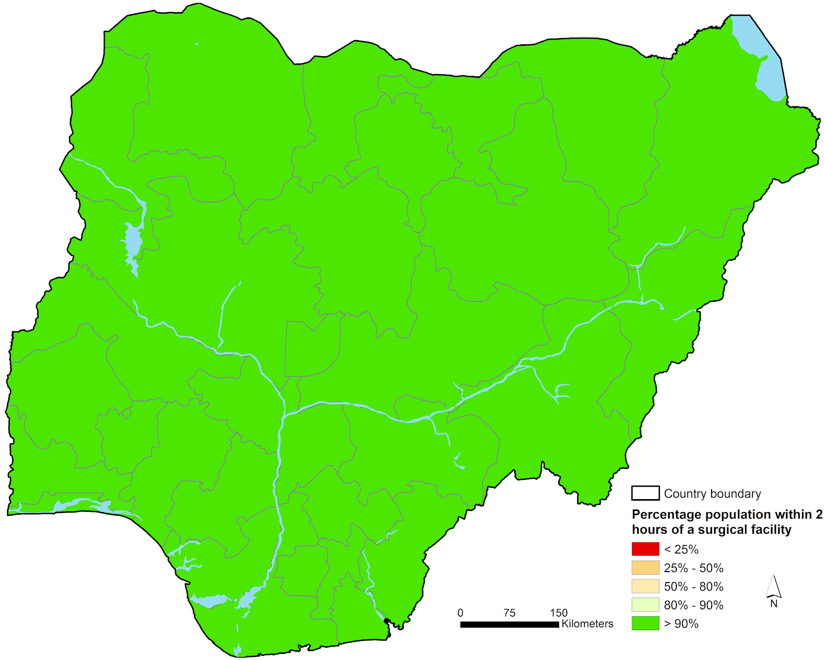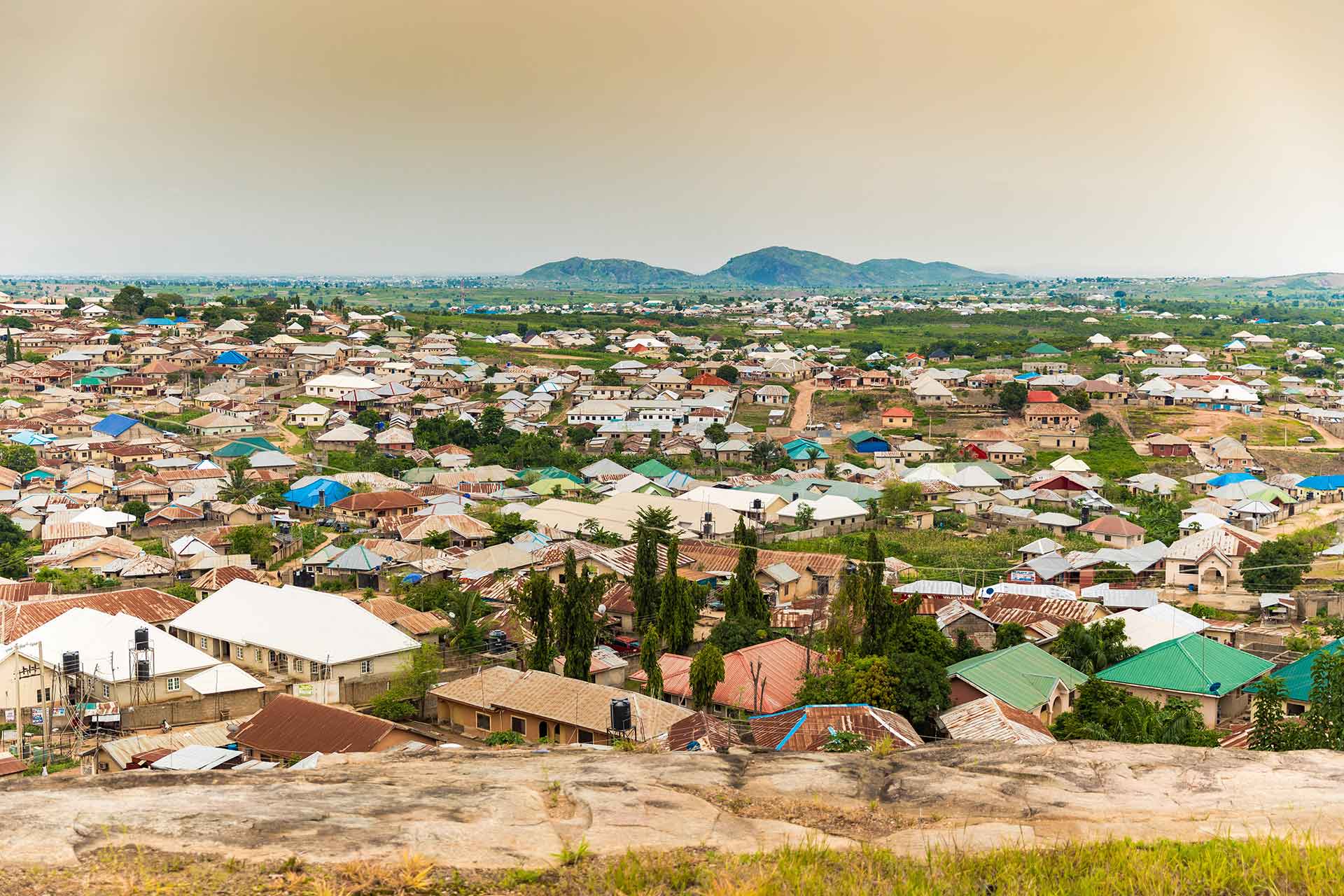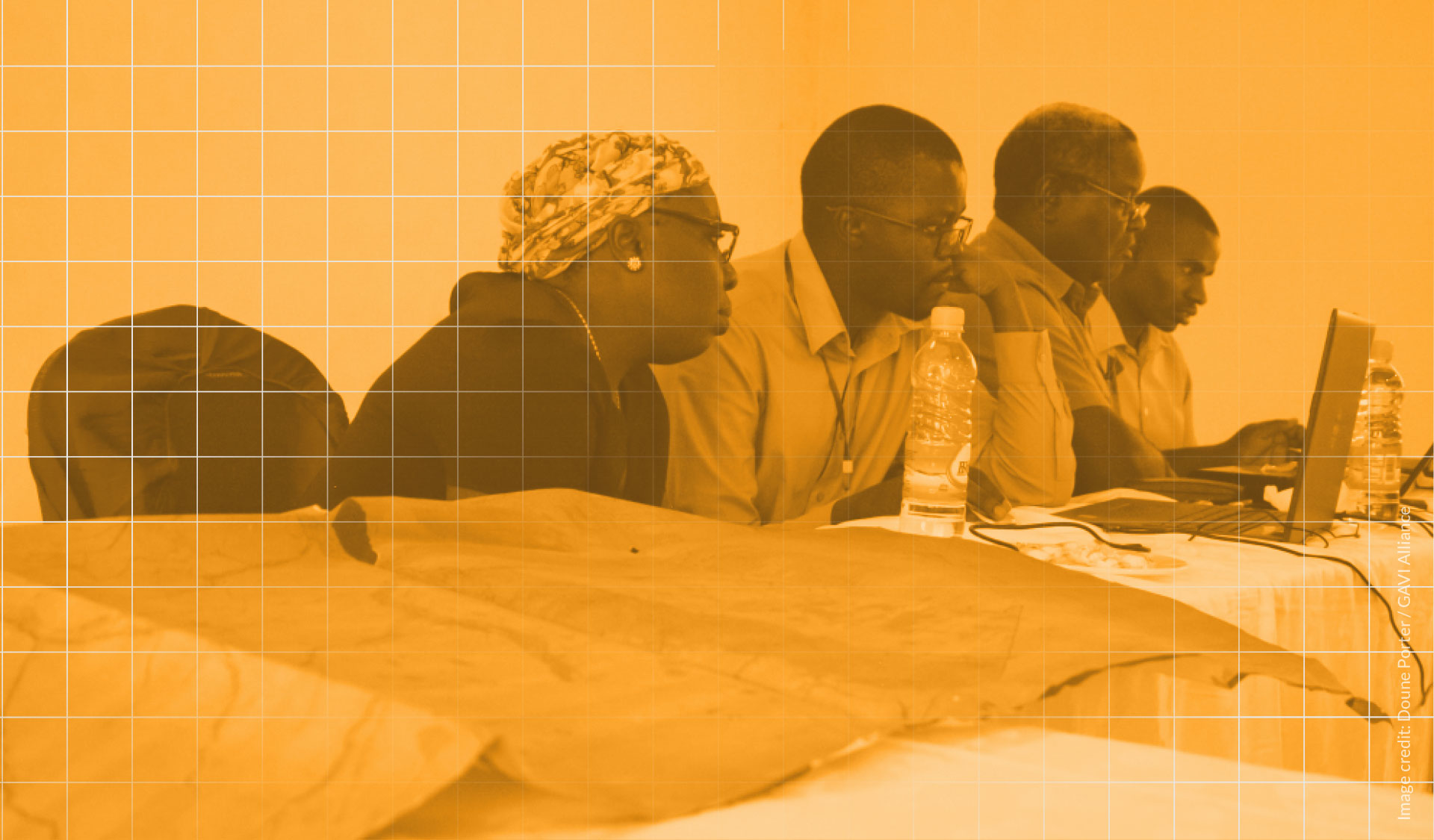National Surgical, Obstetrics, Anaesthesia & Nursing Plan (NSOANP) for Nigeria
Background
An estimated five billion people worldwide do not have access to basic, safe surgical care. This disparity is particularly prevalent in sub-Saharan Africa, where obstetric complications, injuries, and cancer continue to cause significant morbidity, mortality, and long-term disability.
Responding to this need, in 2015 the World Health Assembly passed resolution 68:15, mandating countries to include emergency and essential surgical, obstetrics, and anesthesia care as an integral component of Universal Health Coverage.
The resolution was a wakeup call for the Federal Ministry of Health of Nigeria (FMoH) to take action and develop and implement the Nigerian National Surgical, Obstetrics, Anesthesia and Nursing Plan (NSOANP) with the goal of helping millions of people in the country.
Challenge and need
The proportion of people in sub-Saharan Africa who can access, within two hours, a health facility that has capacity to perform caesarean delivery, laparotomy, and the treatment of open fracture (the bellwether procedures) is unknown. To take stock of the current situation and ensure a strategic approach, the Ministry of Health mandated a baseline analysis of surgical access in Nigeria. Via its Chief Consultant for Pediatric Surgery, the Ministry of Health in Nigeria reached out to UNFPA in 2018 to support the baseline analysis of key indicators on surgical care. They requested UNFPA map health facilities in Nigeria as well as visualise the surgical workforce in relation to population at the subnational level.
Response
This request came as a direct response to a paper published by colleagues from GRID3 on “Geospatial mapping of access to timely essential surgery in sub-Saharan Africa” (Juran et al., 2018). In 2018, GRID3 estimated access to major regional and district hospitals based on travel time. These estimates were then used to assess the overall need for surgical resources at the country level. This study assumes that only major regional and district hospitals can provide essential surgical care. Results indicate that the majority of the sub-Saharan Africa population (92.5%) resides in areas within two hours of a major hospital, based on spatially-defined travel times. Yet, 258-295 million people(115-132 million of whom are children under 15) lack access to safe surgery. Given the optimistic assumption of adequate surgical capacity of major hospitals, the true scale of the challenge of surgical disease is expected to be much greater.
Once they mapped all health facilities, GRID3 researchers were able to determine that 90% of Nigerians lived within 30 minutes of a facility assumed to have capacity to provide safe surgical care, 98% lived within one hour of such facilities, and 100% within two hours (Figure 1). The findings indicate that the appropriate physical infrastructure for the delivery of surgical care may already exist.
Figure 1: Percentage of population within two hours of a surgical facility in Nigeria. Source: Nigeria Federal Ministry of Health, 2019
In a second step, the Ministry of Health provided UNFPA with data (at a highly aggregated federal state level) on the surgical and anesthesia workforce. The current workforce data reveal inadequate availability of surgical and anesthesia personnel, with just 1.65 surgeons, anesthesiologists, and obstetricians (SAO), 100,000 people nationwide (Nigeria Federal Ministry of Health, 2019). The density of pediatric surgeons is even lower, at 0.14 per 100,000 children under 15. For context, it is recommended that there be 20 SAOs and 1 pediatric surgeon per 100,000.
When overlaid with population estimates from WorldPop at the University of Southampton, the results also indicate a severe shortage of professionals required to provide surgical, obstetrics, anesthesia and nursing care.
Outcome and impact
These findings were integrated into Nigeria’s five-year Nigerian National Surgical, Obstetrics, Anesthesia and Nursing Plan (NSOANP), which provides a realistic assessment and situational analysis of the state of surgical care in Nigeria. The plan lays out a clear roadmap for implementation, as well as for ongoing monitoring and evaluation with a robust feedback mechanism. An important priority of the plan is to expand access to emergency and essential surgical, obstetrics, and anesthesia care, along with financial risk protection. Nigeria is the first country to include children and adolescents in a national surgical plan.
Next steps
Going forward, the NSOANP will be integrated into the National Strategic Health Development Plan and National Child Health Policy, ensuring that emergency and essential surgical, obstetrics, anesthesia, and nursing care continue to be strengthened within the existing healthcare system. This investment in surgical care has important benefits, and will generally strengthen the entire healthcare system.
In addition, GRID3 will receive more disaggregated data on Nigeria’s specialised medical workforce, allowing for a more refined analysis and providing more granular evidence for investments in the National Surgical Plan.
Juran S et al. Geospatial mapping of access to timely essential surgery in sub- Saharan Africa. BMJ Glob Health 2018;3:e000875. doi:10.1136/ bmjgh-2018-000875
Federal Ministry of Health (2019) National Surgical, Obstetrics, Anaesthesia & Nursing Plan (NSOANP) for Nigeria Strategic Priorities for Surgical Care (StraPS) Planning for a Future of Surgical Equity, Safety & Progress. https://www.pgssc.org/national-surgical-planning




